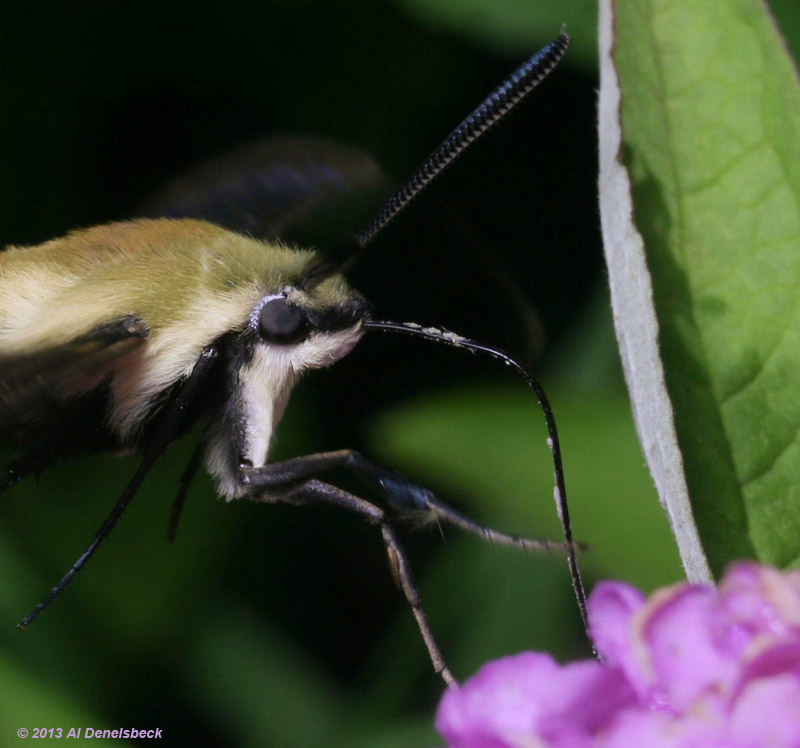Canon 300D Rebel, handheld
Mamiya 80mm at f16
Sunpak FP22 flat-panel flash with diffuser/softbox
1/200 second at ISO 100
Canon 300D Rebel, handheld |
| A moment in time | |
 |
|
There are a few different species of hummingbird mimic moths in the area, and I always have to look them up to tell them apart. This one in particular is a snowberry clearwing (Hemaris diffinis,) which has color variations that also make it mimic bumblebees. It can easily be differentiated from bumblebees by the fact that it never lands when feeding on flowers, while bumblebees always do. It's slightly harder to tell apart from a hummingbird at a distance, but up close it only takes a moment of inspection. Their flight patterns tend to be different too.
I was on the phone with a friend when I spotted this one, about 5cm in body length, and went inside to get the camera; with inordinate luck, it was still hanging out on the copious butterfly bush (Buddleia davidii) blossoms when I returned. And I was still on the phone as I shot this and numerous other frames – my friends are used to it, to be honest (and yes, I was using a hands-free headset on a cordless landline.)
Now for the part I'm most pleased with. These kinds of moths are hyperactive, especially with flowers as thin on nectar as butterfly bushes, and they tend to move from blossom to blossom with a pause of less than a second at each, hovering the entire time. I was handholding the camera and flash rig and tracking it carefully, going with fixed focus and instead varying my distance to the moth to lock the sharpness – challenging, to say the least. As you might imagine, there are more misses than hits in such circumstances, but it's better than trying to adjust a focus ring.
The image below is the same one, a tighter crop at higher resolution to show the detail. Look at the eyes and the proboscis; did I pin focus down, do you think? The composition could have been stronger, but for detail on a living and flying insect, I'm not going to feel bad about this one.

